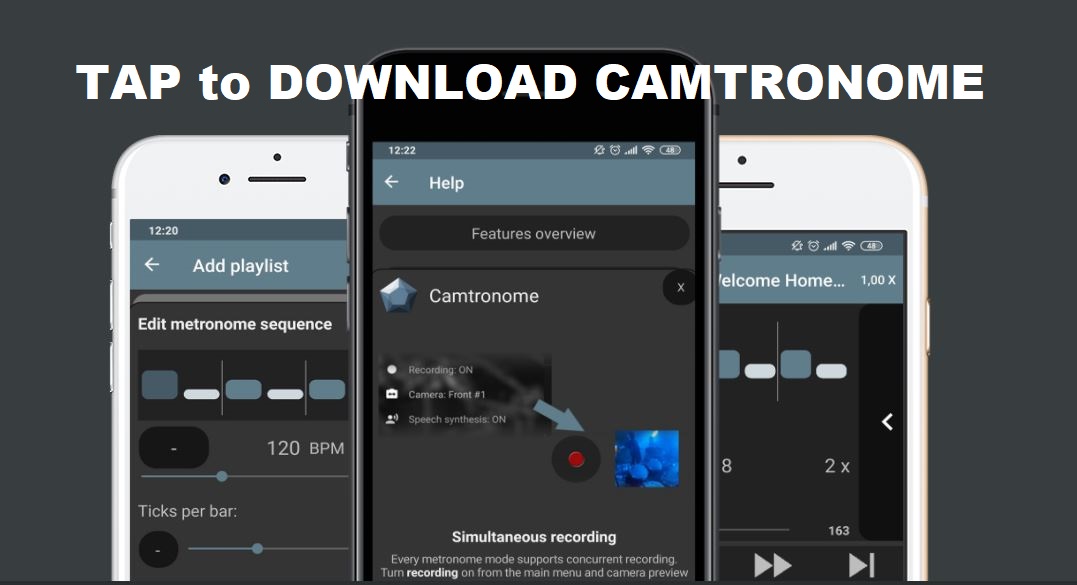
A metronome is a useful device used by beginners and professionals musicians to maintain the tempo during practice. From a learner of the basics to an experienced musician who always strives for perfection concerning rhythm, the metronome plays arguably the most important role in developing timings, coordination, and general musicianship.
What is a Metronome?
A metronome is a device that produces regular audible ticks or beeps at a certain tempo, usually measured in beats per minute. This the musician listens to and becomes synchronized with a steady pulse, managing to play at uniform speeds. The older version of the mechanical metronome had a pendulum, but modern ones are digital and often customized—even available as apps now (for example Camtronome app). The ability to set both BPM and time signature allows giving a structured approach to practicing.
How to work with a metronome: the step-by-step guide
Define the BPM – beats per minute: Firstly, you should fix the tempo of some piece that you want to play. If you’re a beginner, use a lower BPM, which would allow you to develop accurate timing. Later on, you can challenge yourself by playing at faster tempos.
Set the Time Signature (Meter): Choose the meter that most applies: 4/4 = four beats per measure; 3/4 = three beats per measure; 6/8 = six beats per measure. Set this on your metronome to match the work in the piece you are working on.
Start the Metronome: With the BPM and meter set, turn on the metronome. Pay attention to the clicks or beats that will guide you on when each note or rest falls. First, you have to play the rhythm at a slower pace, staying in time with the steady pulse produced by the metronome.
Increase Speed Gradually: As you become more confident playing the piece at a slower tempo, gradually increase the BPM. This trains your playing speed while accuracy is maintained.
Why is it important to practice with a metronome?
Some of the reasons to practice with a metronome are:
Improve your timing: A metronome tries to drive home the need for consistent rhythm so as to avoid rushing or dragging.
Develop musical discipline: a metronome teaches you to stay on beat, even with complex pieces or challenging tempos.
Enhance your speed and precision: As you gradually increase the tempo, your muscle memory improves to allow you to play fast passages with precision.
Prepares you for ensemble playing: If you play in a band or orchestra, using the metronome will help keep your tempo solid when playing with other musicians.

Exercises to Improve Your Rhythm with a Metronome
Here are a few exercises that will help you make the most of your metronome practice:
Play simple notes with the metronome pulse: start by playing quarter notes, aligning each note with a metronome tick. Begin with a comfortable range of the tempo, for example, at 60 BPM, and gradually increase the tempo. This will help concentrate the pulse within your subconscious.
Practice in different time signatures (meters): get into the habit of challenging yourself regularly to play in different time signatures, such as 4/4, 3/4, including challenging meters such as 5/4 and 7/8. This will increase your flexibility regarding rhythm.
Play scales with a metronome: Take a scale—for example, C major—and play it up and down against the metronome. Start at slow speeds and work your way up incrementally. Example: Play one note per beat. Then alternate quarter-eighth in order to build up speed.
Play chord progressions or arpeggios with a metronome: Practice the I-IV-V chord progressions (C-F-G in C major) or arpeggios. Start slowly to make sure you are playing correctly, then gradually increase the speed as you are more comfortable. You can try also:
- Playing arpeggios in 4/4 time so that each note falls on a beat.
- Using different rhythms, such as triplets or sixteenth notes, to aid in developing finger independence and getting a better feel for timing.
Metronome with piano and drums
Metronome is versatile and meets the requirements of many instruments. Let’s see in greater detail how it benefits piano and drums.
Using a metronome with piano: On piano, a metronome helps unite both hands so the melody and harmony stay in rhythm. This is useful, especially in difficult pieces where both hands play different rhythms. You also can practice challenging passages of fast scales, arpeggios, and difficult time signatures with the metronome for accuracy.

Using a metronome with the drums: As a drummer, it’s very important to maintain a consistent tempo and a metronome will help you keep your steady groove. First, set the BPM, then play some simple beats to it, such as simple 4/4 rock beats. As you improve, experiment with syncopated rhythms, polyrhythms, or odd time signatures such as 5/4. Playing rudiments, such as paradiddles, over a metronome is an excellent means of developing your overall speed and coordination.

Creative ways to use a metronome
The following are some creative ways to take your metronome practicing to the next level:
- Silent practice: Press the metronome on, play together with it for two measures, then shut it off. Try to keep in time as the metronome is still playing. Unmute and listen to the result.
- Subdivide the beat: Alongside playing on the beats, also play in between—for example: eighth notes, sixteenth notes. This helps with precision for faster rhythms.
- Change accents: Whilst practicing, the different beats will be accenting, such as always accenting the second or fourth beat in a 4/4 time signature. This installs groove and dynamics.
Integrating the metronome into your daily practice will build better time, rhythm, and discipline, making you far more confident, flexible, and robust as a musician. Be it piano or even drums, the metronome is the secret weapon for mastering musical precision.









